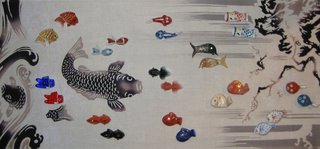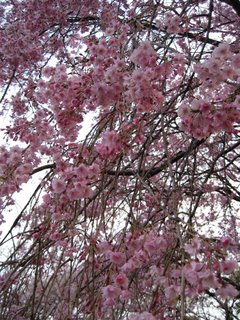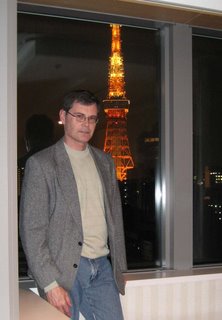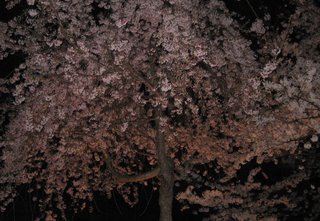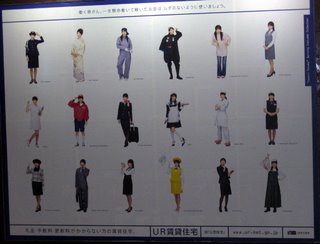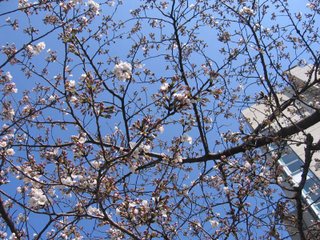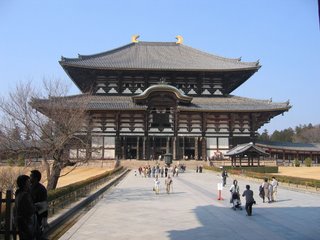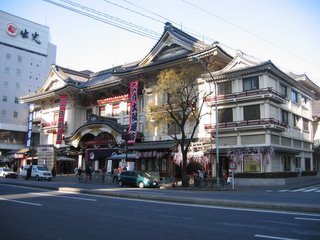
Here is my tea pot and cups. I got it on sale just like the sake set and at the same place. The pot is hand made and was pretty expensive. The cups are everyday ware but match it well and are pretty I think. Anyway, I like it. Simple and contemporary but definitely Japanese.
So how do you make Japanese tea anyway? And what about the tea ceremony? Forget the tea ceremony. I only know one person my age or younger that knows anything about it. It is esoteric, it is impossible for you and me to sit the proper way that long, and it takes years to learn. If you want to know about it, there are places that do it for tourists (mostly Westerners) .
The word for tea is "cha" which is of Chinese origin. Black Chinese tea is called "kocha" and Japanese green tea is called "ocha". The Japanese like all kinds of tea, including iced tea, lemon tea, jasmine tea, herbal tea, any kind of tea. But the favorite is probably ocha.
Like sake, there are lots of kinds of ocha. I suggest you ask for "sencha" which is the most common type. Sencha can vary widely in quality and cost. Since I don't drink that much, I tend to get the better ones. For me, green tea was something of an acquired taste but I enjoy it now. And of course it has cancer fighting anti-oxidants and is supposed to be good for you. Here is how to make the tea:
RecipeBring water to a boil in a special iron kettle over a charcoal fire and cool it to 70 degrees C. by mixing it with an already cooled bowl of water in a special pouring bowl, and using years of experience and the hands to feel, assure the proper temperature. The bowls and cups not being used should be kept on a special lacquered tray, preferably passed down from your ancestors. Or use a computer controlled electric kettle set at the desired temperature like I do and put the pot and cups on the counter.
Pour some water into the tea pot to warm it. Pour that water into the cups to warm them. Now, put the loose tea into the pot. Use about 3 gms of tea per cup. This is more than a teaspoon but less than a tablespoon I think. I use my tea cup to measure the hot water into the pot but the directions the store lady gave me was 60 ml per cup. Steep the tea for 2 minutes.
Notes: A traditional Japanese tea pot has holes or striations in the pot to form a strainer. Some of the newer ones use a stainless steel or fabric screen that fits into the pot. Anyway, you need something to strain it. You can also buy a special container to keep the unused tea in but I haven't done that.
ServingIf you are a good host, you will make each cup the same strength. Pour a little into the first cup, and then quickly move to the next cup, and so on for each cup. Then go back to the first cup and do it again, making several round until you finish with each cup having the same level. You must pour the final drop from the pot! Shake a few drops into each cup, moving from cup to cup, just like you poured it.
The tea will be warm, rather than real hot, and a very light green. For the very best tea, you should actually brew it a little cooler and longer. This reduces the bitterness and astringency. I hope I don't need to tell you not to put sugar in it.
Enjoy...
V=6600

